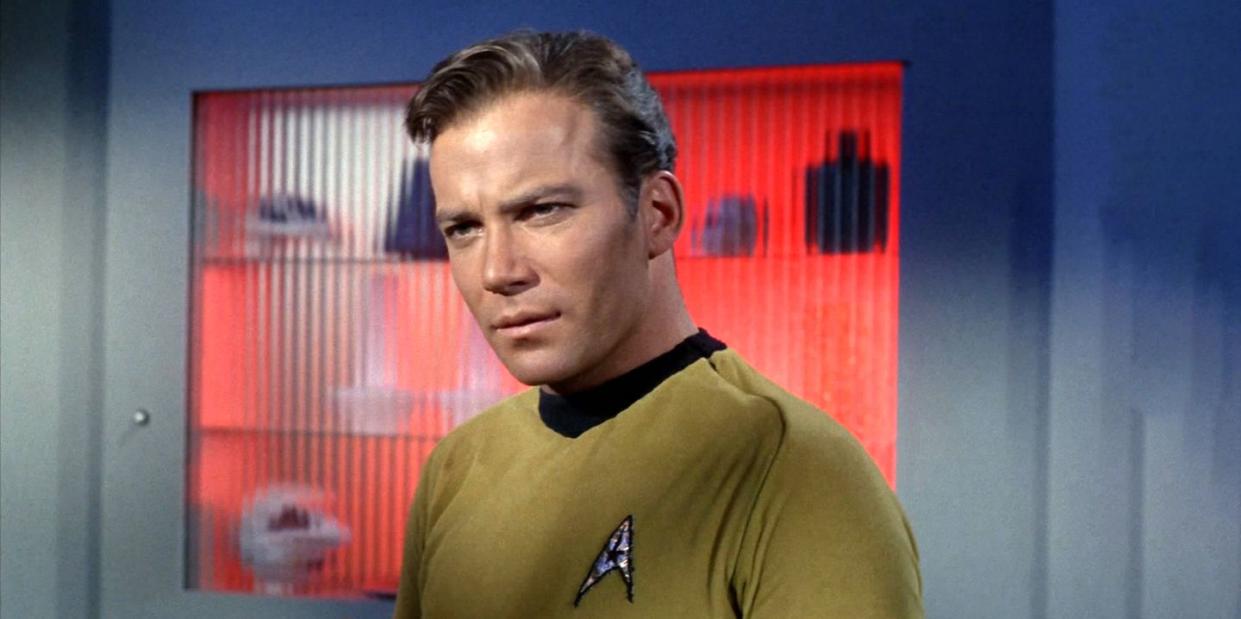'Star Trek' Legend William Shatner Is Urging the U.S. Space Force to Use Naval Ranks

- Oops!Something went wrong.Please try again later.
Star Trek legend William Shatner penned an op-ed in which he urged the U.S. Space Force to use naval ranks.
Shatner points to a long history in science fiction of military space forces using naval ranks instead of air force ranks.
While the actor makes an entertaining case, there are also practical reasons why the Space Force might emulate the U.S. Navy.
A sci-fi legend is making the case for the new U.S. Space Force to use naval ranks. In an Military Times op-ed, Star Trek's William Shatner argues—with prodigious use of emoji—the long history of naval ranks in science fiction makes it appropriate for the burgeoning Space Force to follow suit.
Although Shatner’s argument is tongue in cheek, there’s actually a more practical reason why the Space Force might emulate the U.S. Navy—not the U.S. Air Force.
DIVE DEEPER ➡ Read best-in-class military features and get unlimited access to Pop Mech , starting now.
Shatner, who portrayed Captain (later Admiral) James Tiberius Kirk in the original Star Trek TV series and films, makes the case that the use of naval ranks in sci-fi—which started with the 1902 film Le Voyage Dans La Lune (“Voyage to the Moon”) and continues to this day with the current Star Trek franchise—is ample reason for the Space Force to do the same.
Starfleet Command, the military and exploration arm of the United Federation of Planets in which Admiral Kirk served, uses naval ranks and terms, from Chief Engineer to Ensign and Admiral.

The Space Force falls under the U.S. Air Force, just as the U.S. Marine Corps falls under the Navy. According to Military.com, Shatner’s piece came just two days after two Air Force generals officially transferred to the Space Force while promoting them to the decidedly non-naval rank of lieutenant general.
Shatner goes on to list a long line of heroic sci-fi captains, modestly leaving himself off the list despite his accomplishment of being the first starship captain to defeat a Gorn in personal combat. Shatner also cites several bumbling sci-fi majors and colonels, ranks that do not exist in the U.S. Navy, to reinforce his argument.
Shatner writes:
“Star Trek” has borrowed so much of its iconic rank symbols from the U.S. military and NASA. When you unveiled the Space Force logo, many immediately saw it as an homage to “Star Trek” (even though our Delta was an homage to the previous military space insignias). Why not borrow back from “Star Trek” and adopt our ranks as well? We took them from the Navy for good reason, even though Gene Roddenberry was a veteran of the U.S. Army Air Corps. They made better sense when talking about a (space) ship.
In a practical sense, there is some rationale for using naval ranks. Spaceships are a lot like submarines: enclosed vessels traveling through a void-like medium on long treks. Like subs, spaceships handle hull pressures, though they must deal with pressure on the inside and outside.
Naval forces have deep experience with planning and conducting voyages that could take weeks or months, while most Air Force missions last several hours at the most. When the Space Force finally operates spaceships, it might find itself more culturally aligned with the Navy than the Air Force.
The House of Representatives’ 2021 National Defense Authorization Act (NDAA), a proposed federal law that funds the Department of Defense, includes a provision authored by Texas Representative Dan Crenshaw (a former Navy officer) that would force the Space Force to use Navy ranks.
The provision would still have to be reconciled with a Senate version of the NDAA and eventually be signed into law by the president in order to take effect.
You Might Also Like

